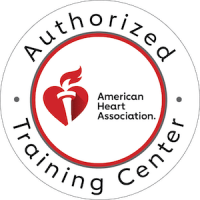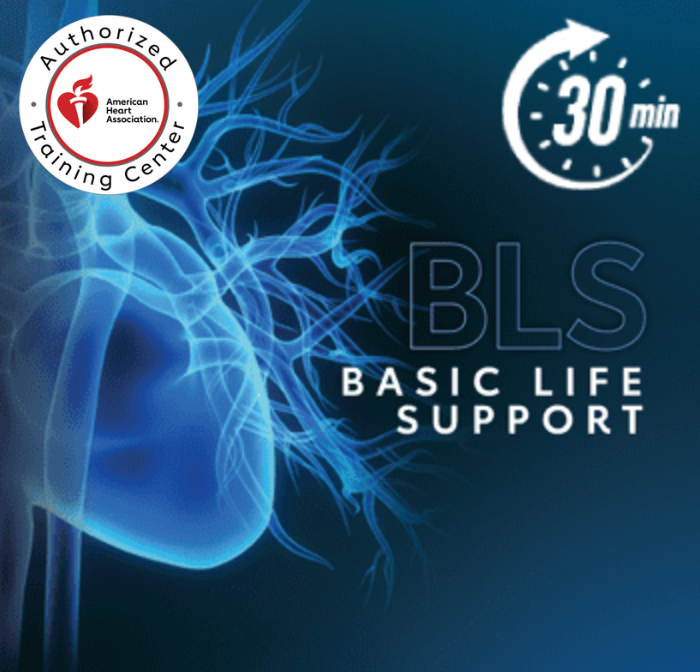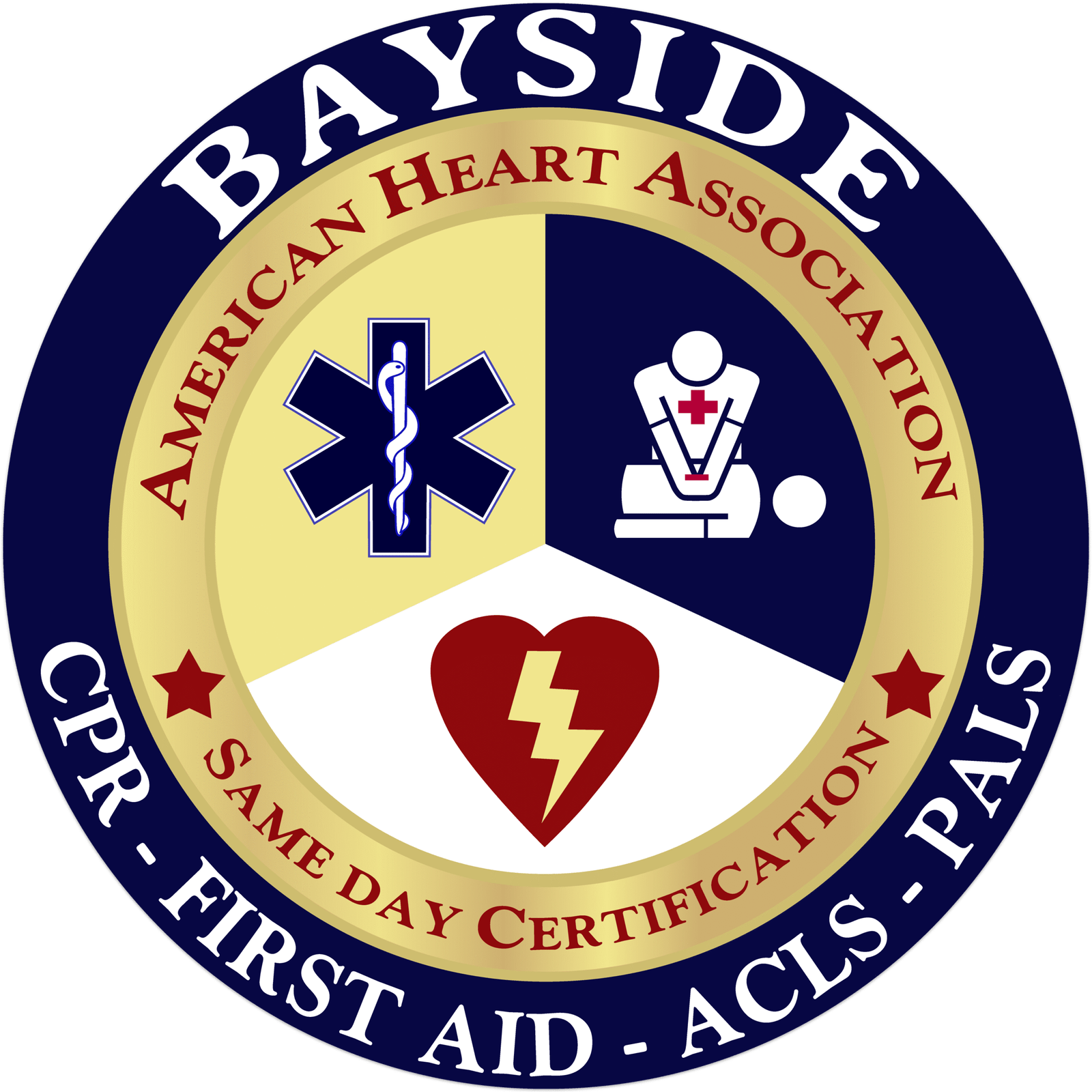
BLS Algorithm
Basic Life Support (BLS) refers to the initial, life-saving medical care provided to individuals experiencing life-threatening conditions such as cardiac arrest, respiratory failure, or choking. The primary goal of BLS is to maintain adequate circulation and oxygenation to the brain and vital organs until more advanced medical help arrives. Whether you’re a healthcare provider or somebody who wants to be prepared, knowing this life-saving process helps to give you the confidence to respond quickly and efficiently when someone’s heart stops.
Basic Life Support (BLS) is more than just CPR. It’s a structured approach that guides you through every critical decision and action—from checking if the scene is safe to using an AED. And the best part? You don’t need years of medical training to get it right. All you need is a solid understanding of the algorithm and a little practice, and you’re prepared to dive in when someone needs you the most.
In this guide, you’ll get a clear breakdown of the BLS algorithm, including step-by-step instructions, variations for adults and children, and what to do in specific cases, e.g., with trauma or in case of an overdose. You’ll walk away with real, usable knowledge that enables you to respond with purpose, not panic. So, let’s jump in and get you ready.
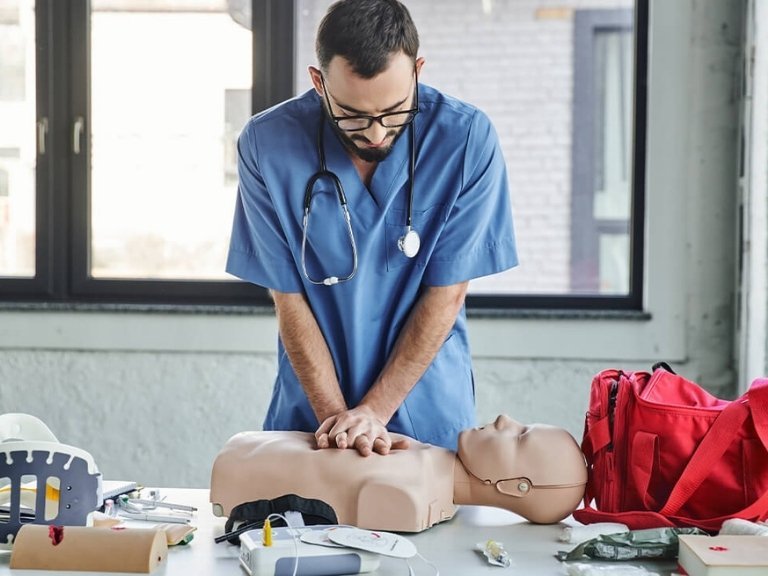
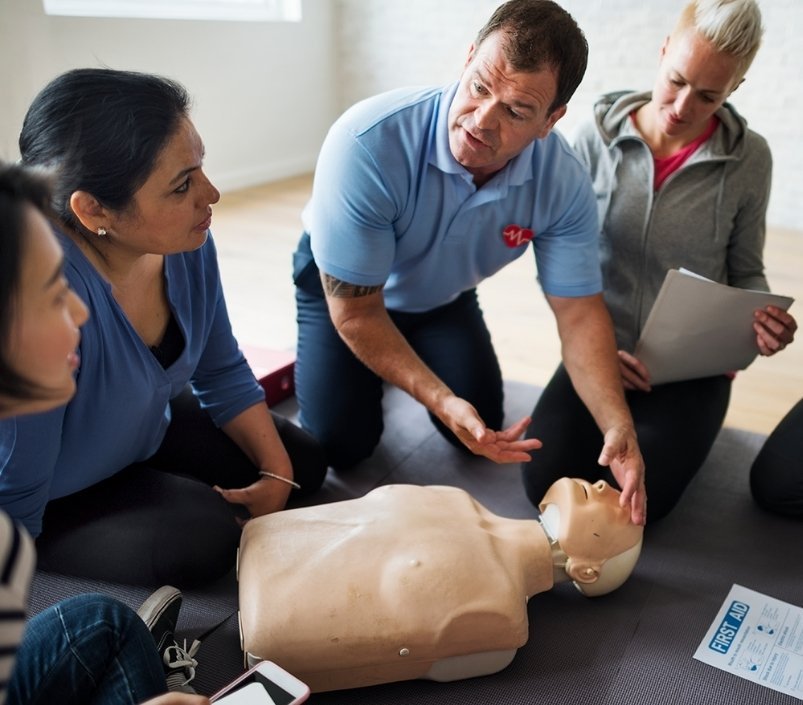
Understanding the BLS Algorithm
Let’s start with the basics because you don’t have time to guess when someone suddenly collapses or stops breathing. Basic Life Support (BLS) is the first aid you provide to someone who has gone into cardiac arrest, is not breathing, or has a blocked airway. And the BLS Algorithm? That’s your guidebook. It gives you a clear, step-by-step path to follow, even when stress is high and when it feels like everything is chaotic.
According to the study published in The Journal of Critical Care, integrating basic life support (BLS) with emergency medical services (EMS) is pivotal in improving survival rates and enhancing systems essential for saving lives during cardiac arrest emergencies. That’s exactly why the BLS Algorithm is designed to show you what to do next—and in what order—so you don’t waste time figuring things out at the moment. Whether you’re the sole responder or part of a larger team, having this structure helps you stay focused, act quickly, and do the right thing without second-guessing yourself.
Think of it like muscle memory for life-saving. The more steps you know, the more confidently you can jump in and take charge of things. You’re not just performing CPR—you’re following a system proven to increase the likelihood of survival and, more importantly, buy precious time until professional help arrives.
Types of BLS Algorithm

You turn to this process when helping teens or adults—anyone who's gone through puberty. You go through the basics: see if they're responsive, scream for help, jump right to chest compressions, and find that AED fast. The important thing is to push hard and fast, and don't waste a second — every beat counts when you're trying to restart a heart.
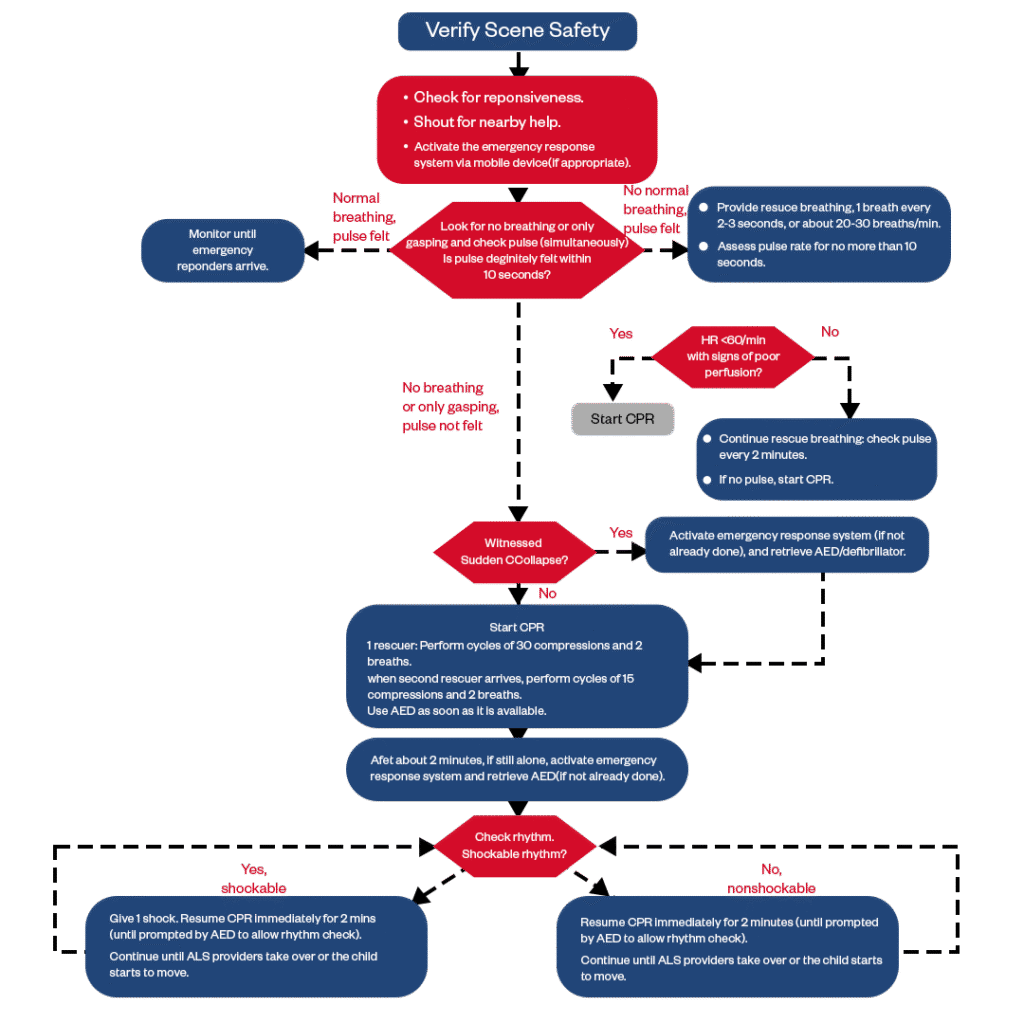
Assisting a child or infant requires a slightly different method. Children need a softer touch and greater emphasis on rescue breaths, particularly as their emergencies often begin with breathing difficulties. If you're alone and don't see a child collapse, start with 2 minutes of CPR before calling 911. But if you witnessed it happen, make that call immediately. Either way, your prompt action gives them the best possible chance of recovery.
Key Steps in the BLS Algorithm
1. Ensure Scene Safety
- Before doing anything, take a second to check your surroundings.
- Look for dangers like fire, traffic, broken glass, or anything that could harm you or the victim.
- Don't approach until the area is safe.
- Your safety comes first—if you get hurt, no one wins.
2. Check Responsiveness
- Approach the person and check if they're responsive.
- Tap their shoulders firmly.
- Shout, "Are you okay?"
- Look for movement, groaning, blinking, or any response.
- If there's no response, move to the next step right away.
3. Activate Emergency Response System
- Call for help immediately.
- If you're alone, use your phone's speaker mode and call emergency services.
- If someone else is with you, have them call while you start caring.
4. Assess Breathing and Pulse
- Check if the person is breathing and has a pulse—quickly.
- Look for chest rise, listen for sounds, and feel for air on your cheek.
- Feel for a carotid pulse on the side of the neck.
- Take no more than 10 seconds.
- No breathing and no pulse? Start CPR now.
5. Begin High-Quality CPR
- Start chest compressions right away
-
Push hard and fast: Depth:
At least 2 inches (5 cm)
Rate: 100–120 compressions per minute - Let the chest fully recoil each time
- Give 2 rescue breaths after every 30 compressions if you're trained
6. Use an AED
- Turn it on and follow the voice prompts.
- Attach the pads to the person's bare chest.
- Let it analyze the heart rhythm.
- If advised, press the shock button.
- Resume CPR right away—don't pause unless the AED tells you to
Special Considerations in BLS
Adults vs. Children and Infants
When performing BLS, age matters. Children’s and infants’ bodies are smaller and more delicate, so your technique needs to adjust. You’re aiming for compressions that go about one-third the depth of the chest. For little ones, that typically involves one hand, not two, and for even younger babies, just two fingers in the middle of the chest. Also, rescue breaths are of much greater importance in pediatric cases — particularly when the cause of the arrest involves a respiratory problem, which is often the case. The need to keep the oxygen going is as important as the chest compressions for the little ones.
Pregnancy
Performing CPR on a pregnant person requires a bit of extra awareness. When compressing, you still perform those basic steps, but you must place your hands a little higher on the sternum. Also, make sure to deviate the uterus to the left side. An enlarged uterus can press down on large blood vessels, cutting blood flow to the mother and baby. Shifting it improves circulation and makes your efforts more effective.
Trauma
In trauma cases — such as from car crashes or falls — you’ve got to be even more careful. Before you begin compressions, assess for signs of any head, neck, or spinal injury. If you suspect spinal trauma, try to stabilize the head and neck while someone else begins CPR, if possible. And don’t forget: if the person is bleeding heavily, controlling that bleeding becomes a top priority alongside CPR. You’re managing both life-threatening problems at once.
Drowning or Opioid Overdose
When it comes to drowning victims, you’re dealing with a lack of oxygen as the primary issue. So, rather than immediately going into compressions, you begin with rescue breaths — get air in first and then do compressions. On the other hand, with an opioid overdose, breathing can also be severely depressed. If you have naloxone (Narcan) at hand, administer it right away, even while giving CPR. Don’t wait. Because if you get naloxone into someone fast enough, along with some good chest compressions, that person has a fighting chance of returning.
Conclusion
Following the BLS Algorithm gives you a powerful framework to take control during a cardiac emergency. Your actions during those first few minutes matter more than anything else. Whether it’s a family member, coworker, or stranger, your quick and correct response can keep them alive until help arrives.
Keep your skills sharp. Train regularly. Review updates from trusted organizations like the American Heart Association. When you feel ready to take these skills to the next level, become BLS-certified with Bayside. Remain cool, remain prepared, and be the one ready to step up when every second matters.
Our BLS Courses
Frequently Asked Questions
What is the golden rule of BLS?
The golden rule of Basic Life Support (BLS) is to ensure “check for responsiveness, call for help, and begin CPR if necessary.” This involves assessing the person’s consciousness, calling emergency services, and starting chest compressions to maintain circulation until professional help arrives.
What are the 3 Cs of BLS?
In BLS, the 3 Cs refer to the essential steps: Check, Call, and Care. First, assess the victim for responsiveness and check for breathing. Then, immediately call emergency services to summon help. Finally, appropriate care, such as CPR must be provided until help arrives.
How many cycles of CPR in 2 minutes?
In 2 minutes of CPR, aim for 5 cycles of 30 chest compressions followed by 2 rescue breaths. Each cycle lasts about 24 seconds, so you’ll complete 5 full cycles in 2 minutes.
What is the ratio of 2-person CPR to 1-person CPR?
The CPR ratio varies between one-person and two-person scenarios. In one-person CPR, the ratio is 30 chest compressions to 2 rescue breaths. In two-person CPR, the ratio remains the same (30 compressions to 2 breaths), but one person performs the chest compressions while the other administers the rescue breaths. The roles should be alternated every 2 minutes to prevent fatigue.
What is the cab algorithm for BLS?
The CAB algorithm for BLS prioritizes the actions to be taken in an emergency. CAB stands for Compressions, Airway, and Breathing. First, chest compressions should be started immediately to maintain blood circulation. Next, ensure the airway is clear by opening it and providing rescue breaths. This order emphasizes the importance of chest compressions to maintain circulation before focusing on airway and breathing.

